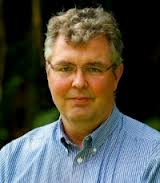International Knowledge-Sharing Workshop “Best Practices for Implementing FLR in South Asia”
Chilaw, Sri Lanka, 15-17 August 2018
As follow-up to the 2017 consultations in India, the Ministry of Mahaweli Development and Environment, Sri Lanka, in cooperation with the International Union of Forest Research Organizations (IUFRO) organised a knowledge-sharing workshop on best practices in implementing forest landscape restoration (FLR) in South Asian countries. Around 60 experts contributed to the workshop, including partners from governmental and non-governmental institutions in Bangladesh, India, Nepal, Pakistan and Sri Lanka as well as international expert organisations of the Global Partnership on Forest and Landscape Restoration (GPFLR) such as FAO, IUCN, TROPENBOS and CIFOR.
Generous funding for the workshop was provided by the German Federal Ministry for the Environment, Nature Conservation and Nuclear Safety; The Global Environment Facility; National Institute of Forest Science, Republic of Korea; and the United States Forest Service.
IUFROLAT III Keynote Address Highlights: Peter Holmgren, CIFOR
 Peter Holmgren, Director-General of the Center for International Forestry Research, presented his Keynote Address, “Forestry in a landscape approach – developing evidence-based policies”, during the final day of sessions of IUFROLAT III.
Peter Holmgren, Director-General of the Center for International Forestry Research, presented his Keynote Address, “Forestry in a landscape approach – developing evidence-based policies”, during the final day of sessions of IUFROLAT III.
Holmgren, presented a series of questions, framing a way forward to position forestry alongside that of other land users to address multi-sector problems in a landscape approach.
In his first question, “what are the policies we need?” he defined what shapes many of the forest policies, not only in Latin America, also on a global scale. These included poverty reduction, nutrition and food security, climate change adaptation and mitigation, preservation of biological diversity, and achieving green growth and equity. He outlined how forestry is related to 9 out of 12 sustainable development goals, and we need to think about where forestry can play a role in policies being politically relevant and providing positive contributions.
He transitioned by asking, “how does forestry contribute?” and presented his thoughts on how forestry is portrayed on increasingly large level. Forestry has become an environmental issue and forestry related questions are often blurred with perceptions of forests on a whole. Topics such as REDD, illegal logging, etc have brought attention to forests, yet fundamentally, they are not forestry issues. Holmgren proclaimed, “We need to take forestry out of the forest”. He explained how the adoption of a broader definition of the role of forestry, and how it applies to address key issues across a landscape, could be employed.
Expanding on this thought, Holmgren asked the question, “how is a landscape approach different?” In answer, he identified a sustainable landscape framework that focuses on objectives such as; ensuring livelihood provision, sustaining ecosystem services, securing food and non-food products, mitigating pollution and achieving resource efficiency. To do so, we need to see landscapes as a large part of sustainable development, identify multiple objectives and acknowledge that there are beneficial synergies as well as trade-offs. We need to build our work to ensure that local stakeholders are in charge and help strengthen the role of sectors to support them building a holistic landscape.
In order to provide this support, we must incorporate evidence-based approach in our science and policy interface. He answered his final question, “what is different about an evidence-based approach?”, by introducing new models that identified the importance of satisfying demand by stakeholders for information with relevant, credible forest science research.
Holmgren closed with some take home messages:
- It is time to take forestry out of the forest,
- We need a landscape approach to deal with sustainable development challenges; and
- Our plans for the future must be evidence-based.
